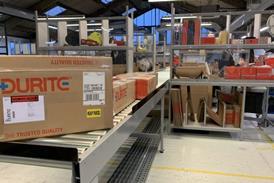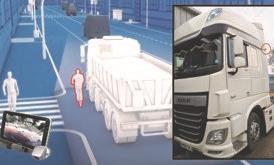At this week’s multi-million euro launch of Renault Trucks’ complete new line up in Lyon, senior directors from its parent Volvo Group turned out to lend their support to this €2bn (£1.7bn) project to revitalise Renault’s ageing CV portfolio. These included Volvo Group president Olof Persson and he spoke to MT editor Steve Hobson.
History is littered with examples of truck manufacturer takeovers where adding 1 to 1 equals 1 and a bit rather than 2. With Volvo in the process of launching its Euro-6 line up ahead of the January 2014 deadline, it is important that the two line ups take market share from rivals rather than cannibalise their own sales.
So while there are inevitably some shared components across the Renault and Volvo ranges, Persson is clear that the two cabs were developed separately to have very different personalities.
“It is very important to look at the brand distinctions, and when you develop a cab and other components to look at the heritage, the future and the different customer segments you want to serve,” he says. “Of course on a global basis we are looking at what we can utilise in terms of technology and components, but to me it is important that each and every brand needs the prerequisites to achieve its full potential. The cab is a very important part of that.”
The plain olive drab-colour scheme chosen for the Renault launch vehicles, coupled with its utilitarian black plastic front grille, reinforces its positioning as a simple, reliable product for the middle market, leaving Volvo to compete in the premium, high tech sector.
“We have said that we have a premium Volvo product, and we have to be careful that we when we talk about ‘premium’ that we are talking about the full experience that a Volvo customer expects,” says Persson.
“When we talk about Renault, the customer base is very demanding in terms of reliability, fuel efficiency and robustness. That is what we are focusing on for Renault Trucks," he says. "So I would not at all call it that kind of segmentation but we do separate the products in different feature levels so when we put a truck on the road it is focused on its core customer base.”
There had been suggestions that Renault would focus on the light to medium weights while Volvo took care of the heavy end, but the new Renault range has been built with the technical capacity to operate at up to 120 tonnes.
“We have the money in to get a full range and that is the range we are going to the market with,” affirms Persson. “We are not giving preferences to certain weights.”
Pricing to come
Like most manufacturers, Volvo and Renault are keeping their powder dry on the pricing of Euro-6 and Persson will not be drawn on the price differential between comparable Renault and Volvo models.
“When it comes to prices we will reveal those as we go along,” he says. “One thing is that I am pushing hard is that each and every model in every brand needs to be competitive. What we ultimately want to do is take this enormous investment into actually increasing market share and sales. Therefore the competitiveness is very important and has been part of the design from the beginning.”
With fewer fleets buying trucks outright, manufacturers’ captive finance houses will have an important role to play in funding fleet renewals with the new Euro-6 vehicles, and Persson is adamant Renault will have the necessary funds to do leasing and contract hire deals.
“Buying a truck today is not just about buying the hardware,” he says. “Buyers are also looking at financing, servicing etc – it is the complete package. We have over the years been extremely successful in offering captive financing – so much so that during the crisis in 2008 and 2009 we still had the money available to support our customers. That is the case today and will be in the future.”

Renault made much of the millions of test kilometres the new range has completed before its launch, and the involvement of 50 key customers in the development process. While aspects such as running costs are clearly key, Persson says two attributes of the new truck consistently topped the wishlist.
“There were a number of areas where we listened to customers – everything from how we designed the cab and the dashboard etc,” he says. “But the point that came out very clearly was the robustness. The 10 million kilometres of road testing, the 5 million hours of bench testing all goes into this robustness. And the second was fuel efficiency with the optimised driveline and new aerodynamics. These were the two I would point to.”
France is still Renault’s biggest market, followed by the UK and Spain, and sales have suffered as the southern European economies have struggled in the euro crisis. Persson is therefore keen to build Renault’s market penetration in emerging economies, and at the launch Renault pledged to boost its support network by up to 40%.
“France is always going to be very important for the Renault brand,” he concedes. “The target is to expand and increase market share here. Looking at the rest of Europe I have been very clear that I am not satisfied with our combined market share in Germany and that is something I want to see increase, Renault and Volvo together.
“We are going to utilise our new structure of the dealer network, increasing the service points by 40% in certain parts of the region, so that we can grow.”
“Renault is also very strong in northern and central Africa,” he adds. “In the construction sector in Asia too Renault has built a very good reputation which we are going to continue. We are going to go through each and every brand and see where we can develop that further with our new set up and organisation.”
Importance of the UK
Persson says the UK is “very important” to Renault and while he will not reveal the market share Renault is targeting it is no secret that Renault Trucks UK has high hopes of the new Euro-6 range.
“With this new range and the customer base we have in the UK I think we are very well positioned to meet that demand,” he says. “The UK will continue to be a very important market. We already have very good dealer coverage in the UK.”
Equally Persson will not be drawn on how many more trucks Renault has to sell to repay the €2bn investment in its new range but says he has confidence that the money has been well spent.
“We do have a number of internal targets both in terms of market share and total sales,” he says. “I am confident in the potential of the Renault brand – otherwise we wouldn’t have done this investment. If you look at where it came from 10 years back and the development it has had, the potential is definitely there to support and investment like this. I am proud and happy – but also very confident.”

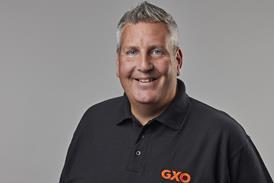
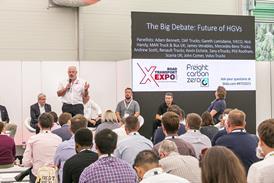
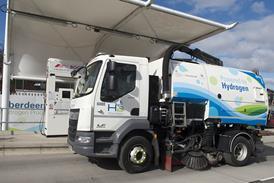


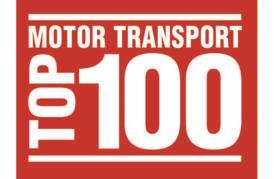
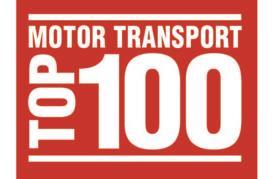
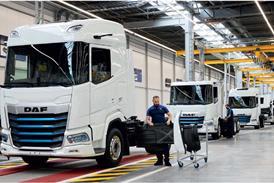
![Mercedes-Benz_eActros_600_(1)[1]](jpg/17820_mercedesbenz_eactros_600_11_978080.jpg)

